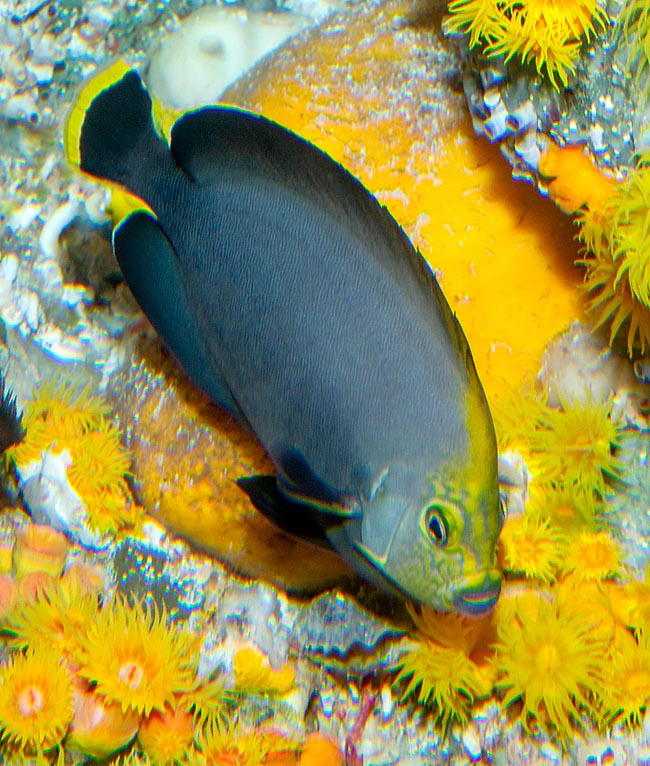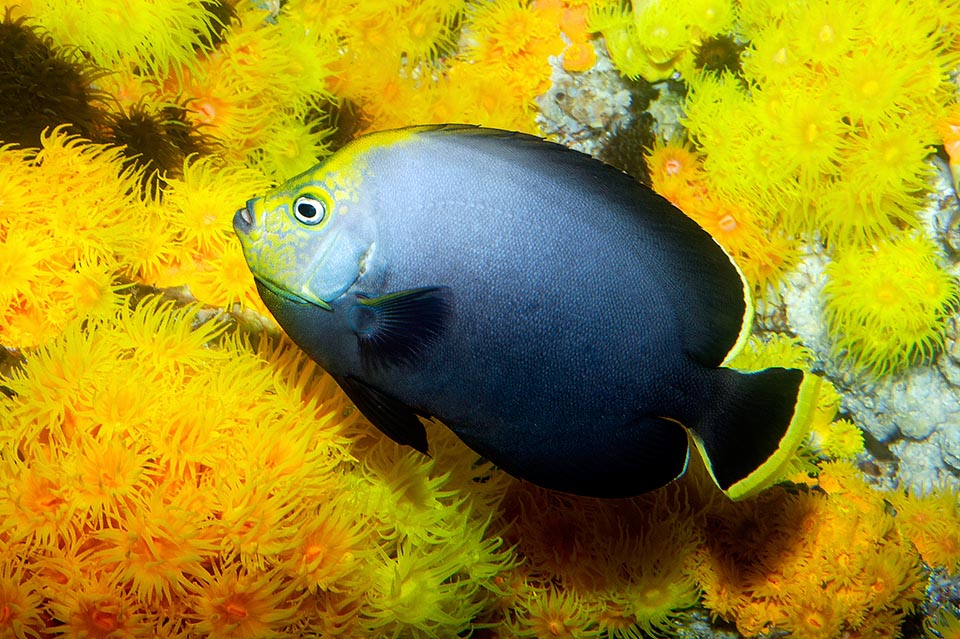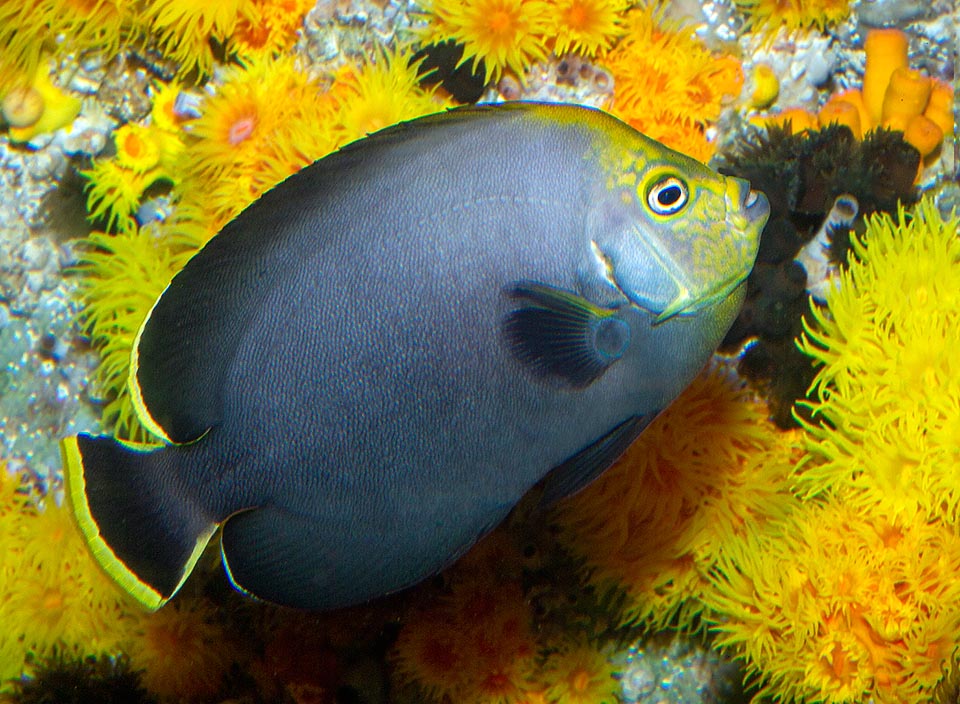Family : Pomacanthidae

Text © Giuseppe Mazza

English translation by Mario Beltramini

The Blackvelvet angelfish (Chaetodontoplus melanosoma) is a rather rare species of the tropical Indo-Pacific © Giuseppe Mazza
The Chaetodontoplus melanosoma (Bleeker, 1853), vulgarly known as Blackvelvet angelfish belongs to the class of the Actinopterygii, the ray-finned fishes, to the order of the Perciformes and to the family of the Pomacanthidae, counting 8 genera and almost a hundred of species often very elegant in their swimming and in their colours, fishes beautiful as angels, but with a characteristic long spine, like a dagger, well visible at the base of the preoperculum.
It is not by chance, in fact, that the name of the genus Chaetodontoplus comes from the Greek “χαίτη” (kaite) = hairs and “ὀδών” = (odon) = tooth, the same root of the genus Chaetodon, the one of the frail Butterfly fishes, with the “teeth shaped like bristles”, with the addiction of “ὅπλον” (òplon) = shield, due to the presence of the showy defensive spine facing the tail.
The species name melanosoma, comes from “μέλαν” (mélan) = black and “σῶμα” (soma) = body, because of the particular dark livery, changing from grey to deep black, like a velvet, depending on the light.
Zoogeography
The Black-velvet angelfish lives in the tropical waters of Indo-Pacific. Starting from India, we find it, eastward, in the Andaman Islands, Indonesia, Timor Leste, and Papua New Guinea. Further north, it is present in the Philippines, in Vietnam, Taiwan and in the south of Japan.
Ecology-Habitat
It is a quite rare residential species associated with cliffs and madreporic formations between 5 and 30 m of depth. Regardless of the strong currents linked to the tides, it frequents also the steep sides of the reefs, rich in crevices where to hide, sponges, tunicates and algae.
Morphophysiology
The Chaetodontoplus melanosoma has the body flattened laterally with the typical profile of the Chaetodontoplus. By sure, it cannot compete in the colours with Chaetodontoplus duboulayi or the Chaetodontoplus septentrionalis but has its own particular charm, so that it now appears in the catalogs for aquarists. The black colour turns grey in the upper part of the body and towards the head, adorned with small yellow orange small traits, whilst the caudal fin and the back part of the caudal and of the anal have a showy bright yellow edge to attract the attention of the predators on less vital organs.

Up to 20 cm long, it swims at 5-30 m deep, regardless of the currents, also on the external side of the reefs, among the algae, the sponges and the tunicates it feeds on © Giuseppe Mazza
The mouth is small, protractile, with fleshy lips and tiny teeth, similar to small brushes. The dorsal fin has 13 spiny rays and 17-19 soft; the anal almost symmetrical, 3 spiny rays and 17-18 unarmed. The solid pectoral fins with 15 rays and the pelvic ones are also unarmed.
Being a hermaphrodite proterogynous species, that is with females that, while growing, can transform into males, these ones, being older, are bigger than the partners and can reach 20 cm.
The juveniles have a deep black colour interrupted by a vertical yellow belt, bright, centred on the operculum, and 4 analogous belts, thinner, on the edge of the dorsal fin, the final part of the anal and of the caudal fin and on the front.

Growing up, females can turn into males. Parental cares do not exist and the numerous fecundated eggs are entrusted to the currents © Giuseppe Mazza
Ethology-Reproductive Biology
The Chaetodontoplus melanosoma lives alone or in a couple nourishing of sponges, corals, tunicates and algae. Parental cares do not exist and the numerous fecundated eggs are entrusted to the currents.
The resilience of the species is mediocre, with a possible doubling of the populations in 1,4-4,4 years, and the vulnerability index is moderate, marking nowadays, in 2020, 34 on a scale of 100.
Synonyms
Holacanthus melanosoma Bleeker, 1853.
→ For general information about FISH please click here.
→ For general information about BONY FISH please click here
→ For general information about CARTILAGINOUS FISH please click here.
→ To appreciate the BIODIVERSITY of BONY FISH please click here.
→ To appreciate the BIODIVERSITY of CARTILAGINOUS FISH please click here.
